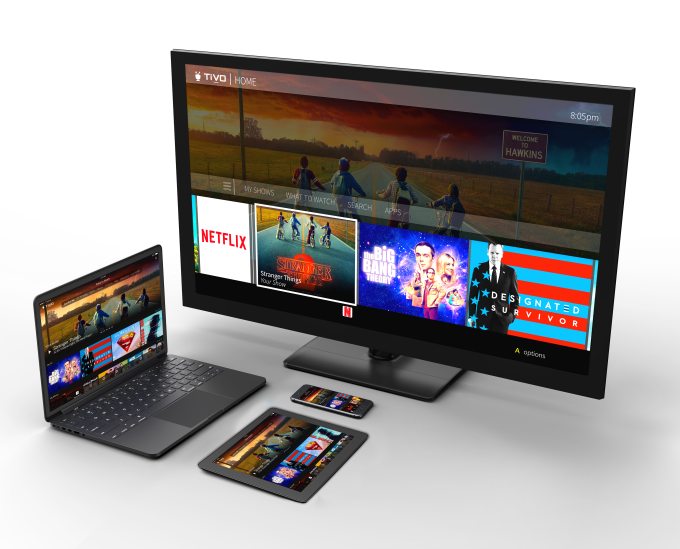TiVo today introduced a new “Next-Gen Platform,” as it’s being called, that will allow pay TV operators to better keep up with the changes in how consumers prefer to watch television today. The platform lets operators offer modern-day features to their customers – like personalization, recommendations, voice control, and more to their managed set-top boxes. It also includes support for mobile devices and for customers’ streaming players, like Apple TV, Amazon Fire TV, and Android TV.
In short, the platform is TiVo’s bet that operators need help to stem the tide of cord cutting. With better software, they’ll be able to retain their pay TV customers by including the sort of features that have become the baseline for other services – like personalization or voice – while also making it easier for customers to access pay TV, streaming, on-demand, and their DVR all in one interface.
That’s what TiVo’s own consumer-facing boxes do, of course. But TiVo (and Rovi, the company that acquired it back in 2016 then renamed itself TiVo) had based their business models on traditional TV viewing. These days, consumers are watching more online via sites like YouTube and Netflix, and ditching pay TV in numbers greater – and faster – than the industry expected. Many younger users don’t even watch on television sets – just phones and laptops.
These changes have left TiVo vulnerable, which is why it’s moving into the enterprise space with this “Next-Gen” solution.
The platform itself includes several products, starting with TiVo for Linux set-top boxes and TiVo for Android TV. Operators who power their managed set-top boxes with either platform can use this Next-Gen platform to offer a wide feature set including personalization, recommendations, conversational voice command and control and, most importantly, the combination of the pay TV content with everything else from the world of streaming and on-demand.
There’s also a separate product called TiVo for Streamers that would allow pay TV operators to offer “bring your own device” programs to customers. That way, consumers could opt to use their own Android TV, Apple TV or Fire TV to watch both pay TV and streaming content, without the need for a set-top box.

There’s also TiVo for Mobile, which supports whatever mobile strategy the pay TV provider has adopted. For example, it could be used to stream content from set-top boxes, from the cloud without a connection to the set-top box, or both.
Meanwhile, for emerging markets in Central and Eastern Europe, Asia, Africa and Latin America, TiVo’s Cubi Solutions offers what it calls a “value-based” (read: cheaper) solution.
TiVo’s Flex-Mode software lets the operators combine their current infrastructure with IP video and other over-the-top content, as they transition to fully IPTV solutions over the years ahead.
A number of traditional providers are in the throes of this today – Dish has Sling TV, AT&T runs DirecTV Now, and Comcast has Instant TV, for example. But they’ve built up their own platforms, so wouldn’t be TiVo customers. Instead, this solution would be targeted towards other, perhaps smaller partners.
According to Multichannel News, possible clients in the U.S. would be RCN Corp., Mediacom Communications, Armstrong, GCI, Grande Communications, Midco, and Atlantic Broadband.
But TiVo hasn’t announced any deals at this point – it’s just putting the news out there, ahead of CES. The company says it has other CES announcements planned, though, but didn’t say if they’re related to this or its other consumer efforts.
